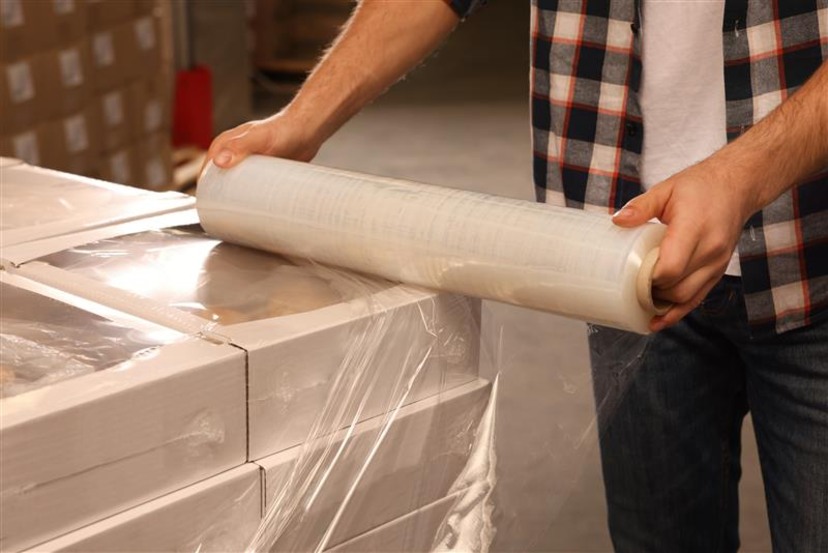CPO Alert: POP Films and Their Role in Protective Packaging

In today’s rapidly evolving packaging industry, companies are increasingly focusing on sustainability, durability, and product safety.
Protective packaging has come a long way from traditional materials like PVC and LDPE shrink films, which often pose environmental challenges.
Chief Procurement Officers (CPOs) are now exploring innovative packaging solutions that balance high performance with eco-friendliness.
Polyolefin (POP) films have emerged as a game-changer in protective packaging. These high-clarity, recyclable shrink films provide superior strength, flexibility, and sustainability compared to conventional shrink wraps.
As consumer demand for sustainable packaging grows, industries are making the switch to POP films to enhance product protection and reduce their environmental footprint.
In this blog, we’ll explore what POP films are, their key characteristics, applications, and their advantages in the packaging industry.
What Are POP Films?
POP (Polyolefin) films are a type of shrink wrap used in protective packaging.
Made from a blend of polyethylene (PE) and polypropylene (PP), they offer a unique combination of strength, flexibility, and transparency. Unlike traditional PVC shrink films, POP films do not release harmful chemicals during production or disposal, making them a more sustainable option.
How Do POP Films Differ from Other Packaging Materials?
- PVC Shrink Films: These were once popular but have fallen out of favor due to their environmental impact and health concerns.
PVC releases toxic fumes when heated and is difficult to recycle.
- LDPE Shrink Films: While more flexible than PVC, LDPE films lack the clarity and strength of POP films.
- POP Films: Offer a balance of high clarity, superior strength, and recyclability, making them an ideal choice for modern protective packaging.
Key Characteristics of POP Films
1. High Clarity & Gloss
POP films are known for their exceptional transparency, making packaged products more visible and attractive. This is especially beneficial for:
- Retail packaging where product visibility influences purchasing decisions.
- Food packaging where consumers prefer clear visibility of contents.
- Consumer goods packaging such as electronics and household items, where branding and aesthetics matter.
2. Superior Strength & Durability
POP films provide excellent tensile strength and resistance to tearing. Their durability ensures:
- Better protection for fragile items during shipping and handling.
- Longer shelf life by preventing damage and contamination.
- Improved stacking stability in warehouses and retail shelves.
3. Shrinkability & Adaptability
One of the standout features of POP films is their superior shrink performance. When exposed to heat, these films conform tightly to the shape of the product, offering:
- Secure and professional packaging that enhances product appeal.
- Compatibility with automatic and manual shrink-wrapping machines, making them versatile for various industries
- Reduced packaging waste by using minimal material for maximum protection.
4. Eco-Friendliness & Recyclability
Sustainability is a growing concern in packaging, and POP films address this with:
- PVC-free composition, making them safer for both consumers and the environment.
- 100% recyclability under certain waste management systems, helping businesses meet sustainability goals.
- Lower carbon footprint compared to traditional shrink films, supporting corporate green initiatives.
Applications of POP Films in Protective Packaging
POP films are widely used across multiple industries due to their adaptability and protective qualities. Some key applications include:
- Retail Packaging: Used for wrapping toys, books, DVDs, and other consumer goods to ensure protection and shelf appeal.
- Food Industry: Provides tamper-proof and hygienic wrapping for bakery products, frozen foods, and ready-to-eat meals.
- Pharmaceuticals: Used to securely package medicine bottles, pill boxes, and medical devices while maintaining product integrity.
- E-commerce & Logistics: Ensures safe transit of fragile items, electronics, and packaged goods by offering an additional protective layer.
Advantages & Limitations of POP Films
Advantages:
- Enhanced Product Visibility – High clarity and gloss improve retail shelf presence.
- Eco-Friendly Alternative – PVC-free and recyclable, making it a sustainable packaging choice.
- Superior Durability – Provides excellent tear and puncture resistance.
- Versatile Usage – Suitable for automatic and manual shrink-wrapping systems.
- Reduced Packaging Waste – Forms a tight wrap, minimizing excess material usage.
Limitations:
- Higher Initial Cost – POP films can be more expensive than traditional shrink wraps, but their durability and eco-friendly benefits often justify the investment.
- Specific Recycling Requirements – While recyclable, they require proper waste management systems to ensure efficient recycling.
- Compatibility with Machinery – Some businesses may need equipment adjustments to optimize the use of POP films in their packaging lines.
Conclusion
POP films are revolutionizing protective packaging by offering a perfect blend of clarity, strength, and sustainability.
As businesses seek eco-friendly alternatives to traditional shrink wraps, POP films have emerged as the go-to solution.
Their superior durability, shrinkability, and recyclability make them an ideal choice for various industries, from retail and food to pharmaceuticals and logistics.
With the ongoing advancements in packaging technology, the future of POP films looks promising.
More companies are making the shift to these sustainable packaging materials to meet environmental regulations and consumer expectations.



